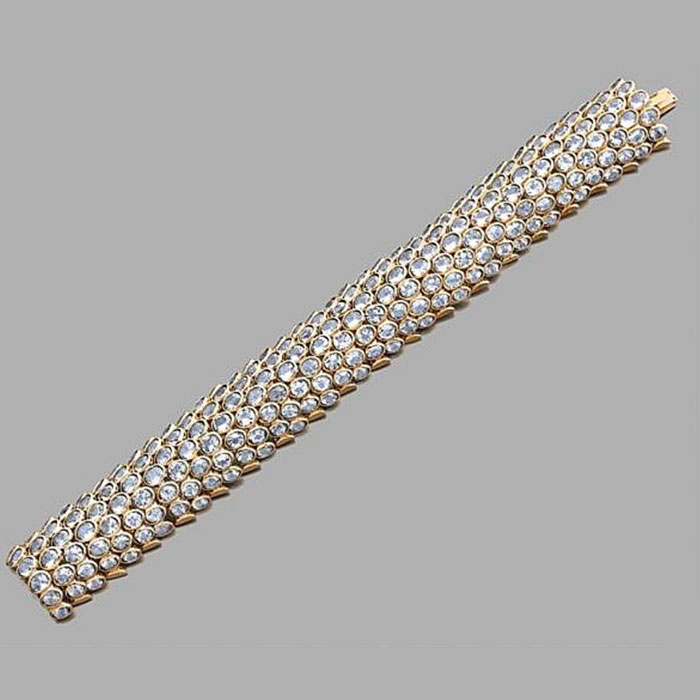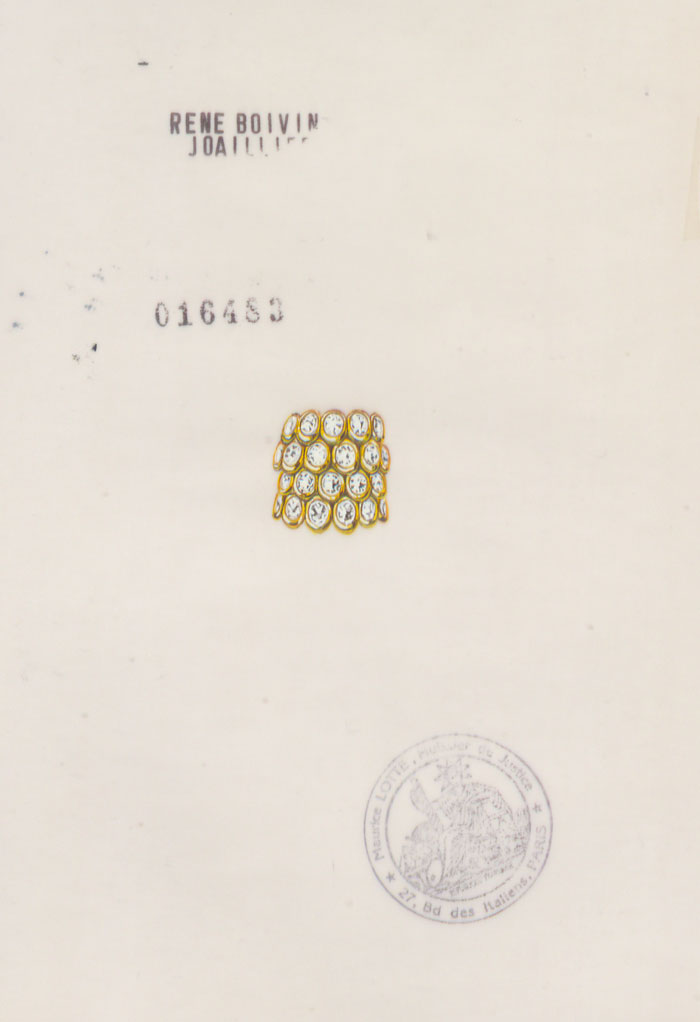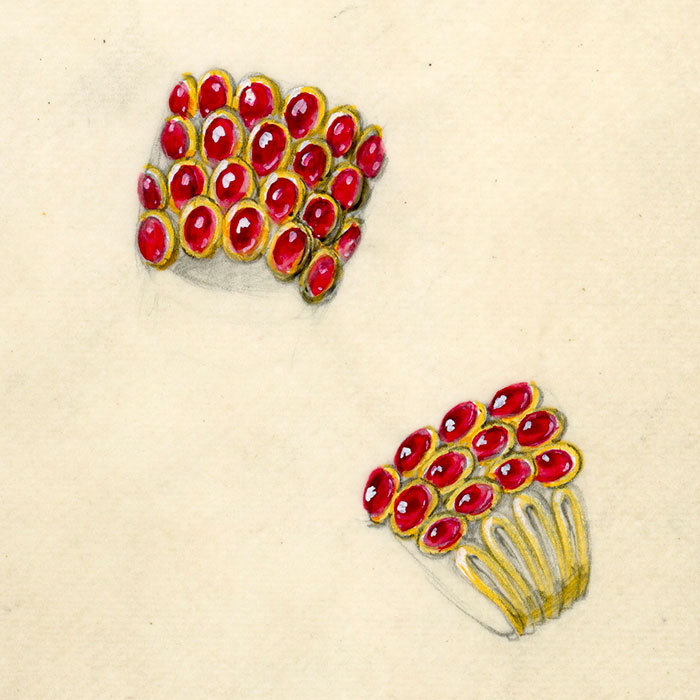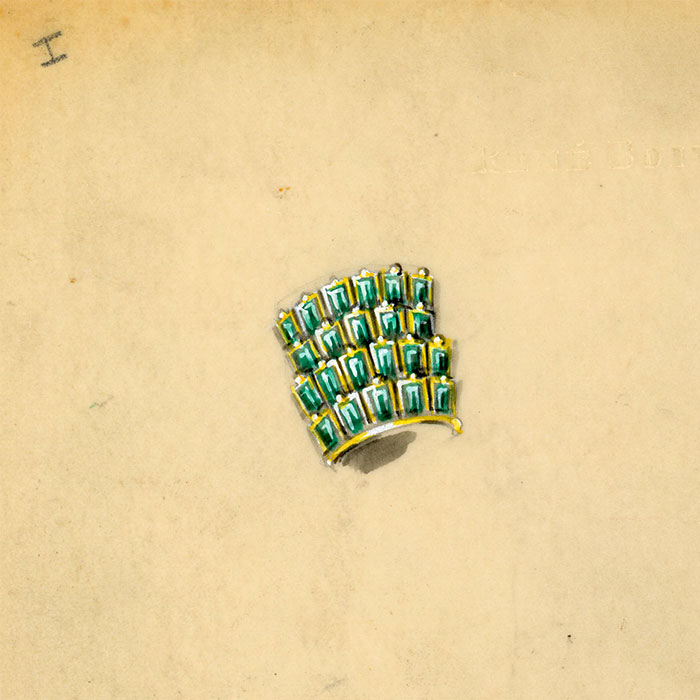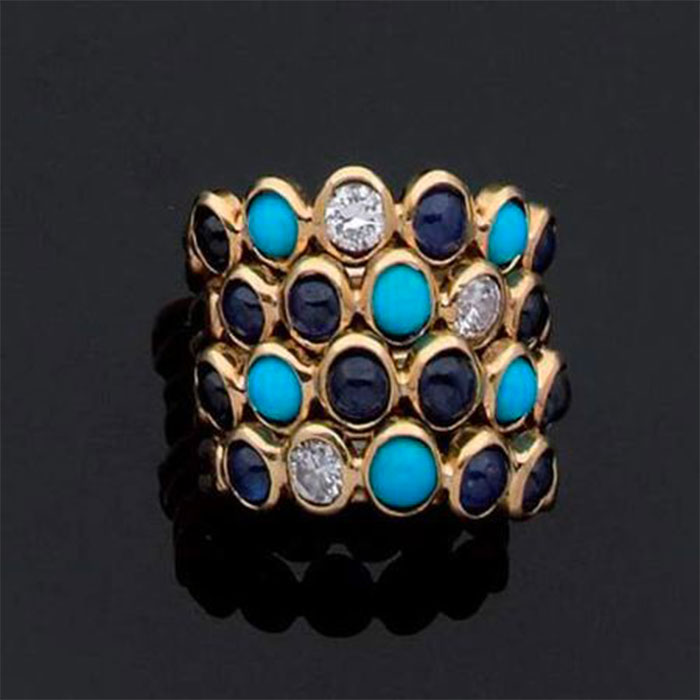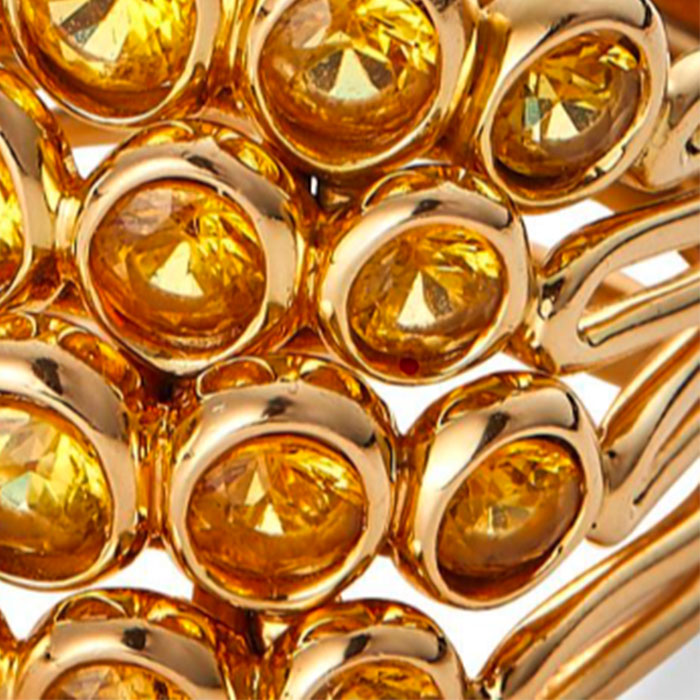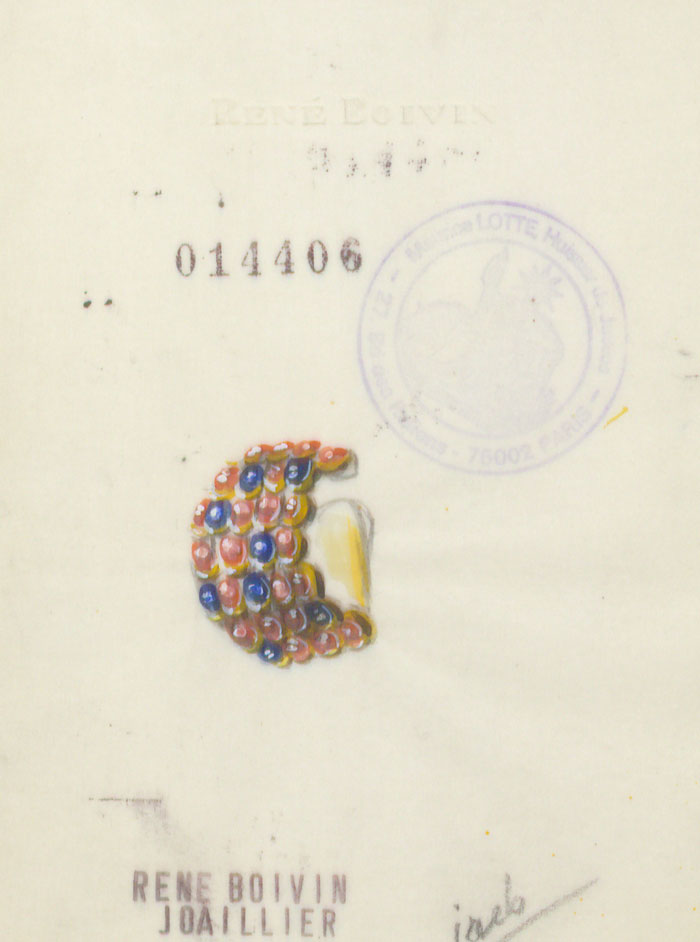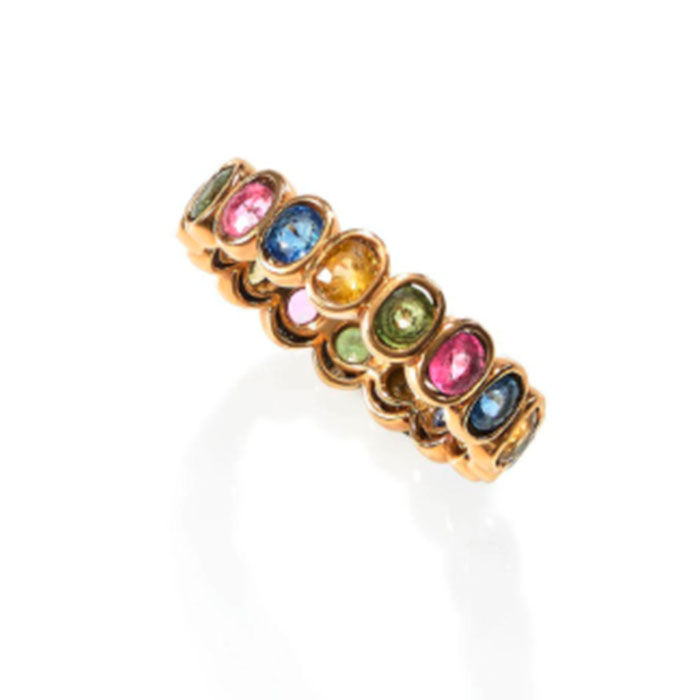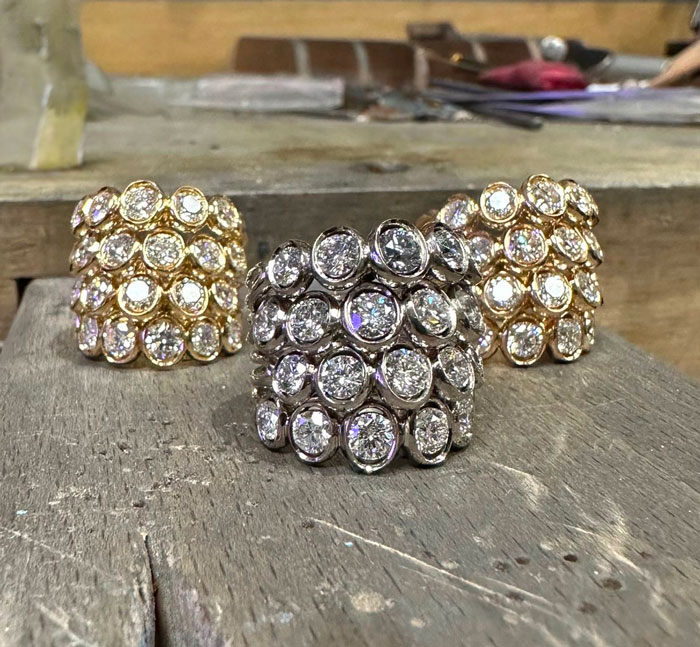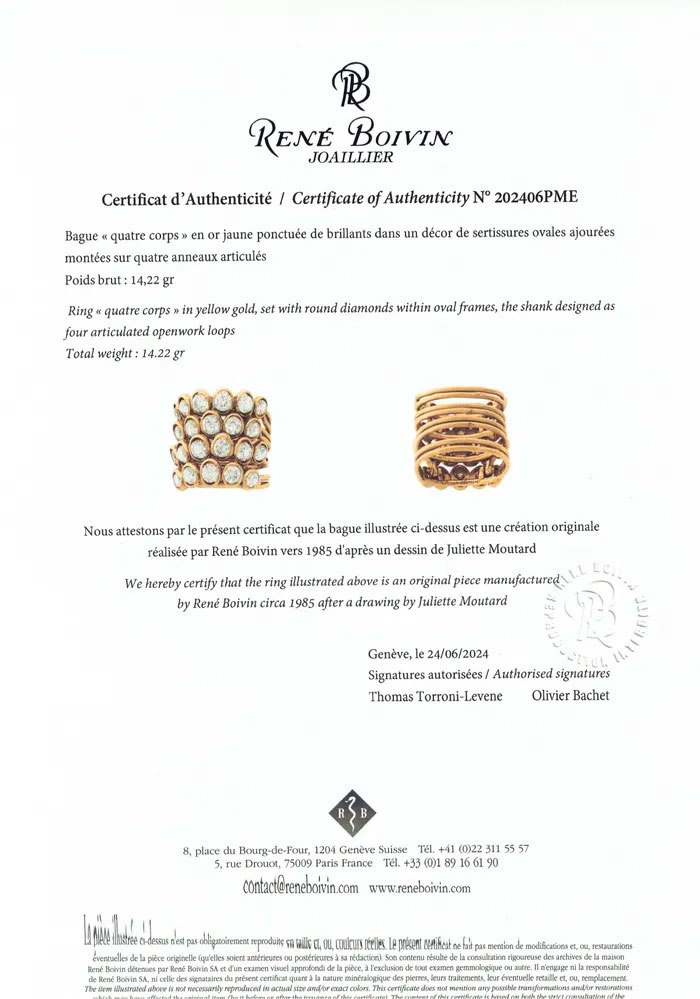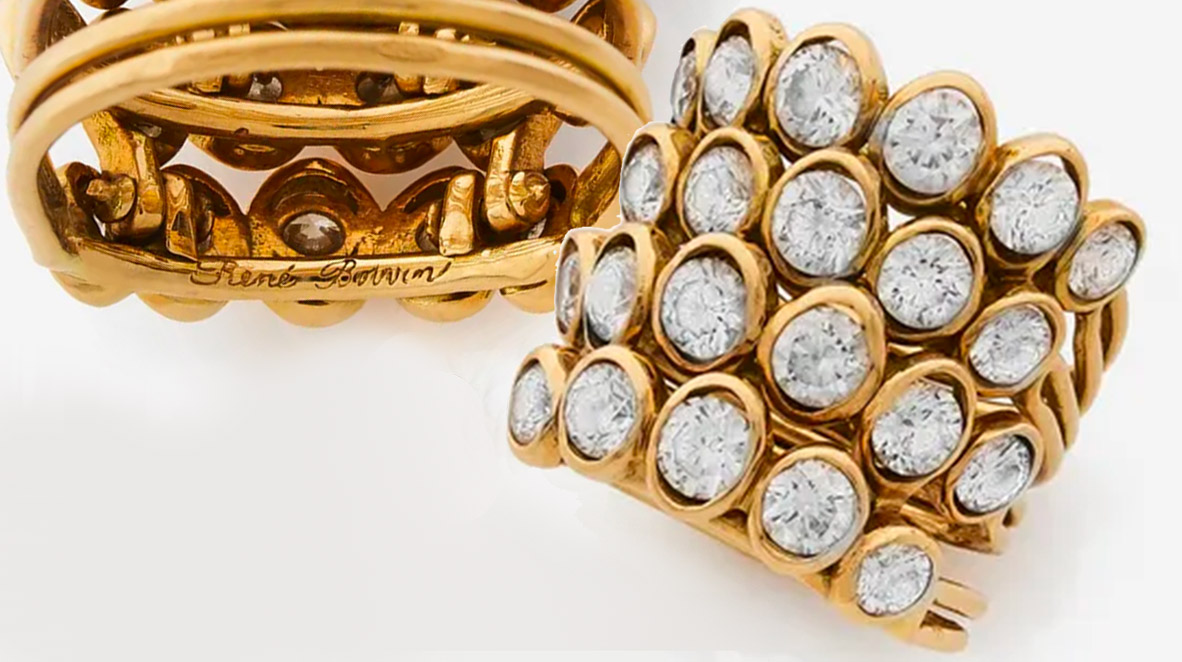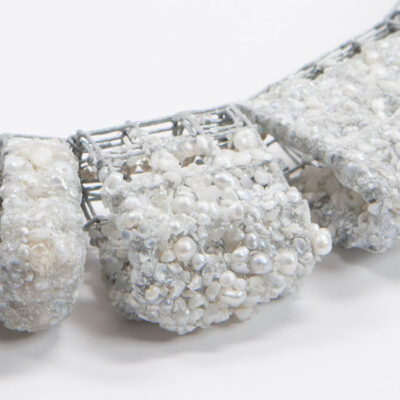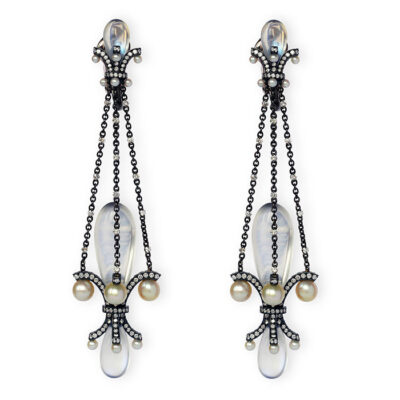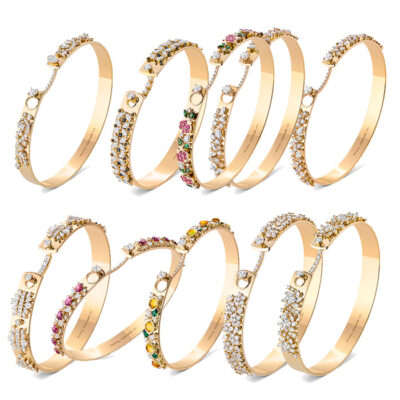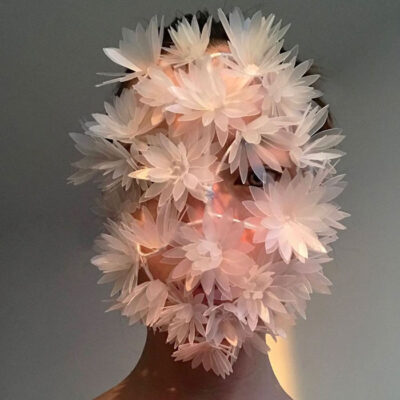Style
01 February 2025
Share
The “Quatre Corps” ring by René Boivin
The “Quatre Corps” ring, an emblematic piece of René Boivin jewelry, is said to have been created by accident in the 1940s.
By Sandrine Merle.
The “Quatre Corps” ring is to René Boivin what the Alhambra is to Van Cleef&Arpels, the Trinity to Cartier or the Quatre to Boucheron. A timeless classic, recognizable at first glance thanks to the 4 rows (also known as “corps”) of stones set in an oval setting evoking scales. “Demand is so strong these days, and models are in such short supply, that prices are skyrocketing at public auctions”, explains Thomas Torroni-Levene, guardian of the company’s temple.
Serendipity
To this day, no one knows the exact creation date of the “Quatre Corps” ring. According to Caroline de Brosses (now deceased), who headed the design team in the 80s, it was created by accident in 1948. It all began when a customer brought in a René Boivin bracelet to be adjusted to her wrist. The workshop then removed four bodies of these interlocking oval scales. Then they were forgotten… and finally found. Today, there’s still some doubt as to who had the idea of “upcycling” this 4-body element into a ring: was it Madame Boivin or Juliette Moutard, the designer at the time?
A dedicated craftsman
Despite its width of around 2 centimetres, the “Quatre Corps” is extremely light and comfortable to wear. And that’s thanks to two in-house manufacturing techniques… Visually, its lightness is due to the “belt” on which each stone’s laminate rests, allowing light to pass through. “Combined with the oval settings, this creates a lovely peacock feather effect,” adds Thomas Torroni-Levene. Comfort is provided by the articulation of these four bodies (rows of stones), each held in place at the back by a system specific to the model. Proof of its success: up until the 1980s, a craftsman was employed full-time to produce it, requiring over forty hours.
A thousand variations
Since its creation in the late ’40s, René Boivin’s “Quatre Corps” ring has been produced in dozens of versions. It has lent itself to all kinds of stones: diamonds, of course, but also emeralds, blue or multicolored sapphires, rubies and more. And every combination: turquoise and lapis lazuli, diamonds and emeralds, etc. Some models feature faceted gems, others polished into cabochons. Oval settings are transformed into graphic honeycombs. Gold can be white, yellow or pink. It can also be reinterpreted as a pair of earrings. The Quatre Corps can also be reduced to 3 bodies, 2 bodies or even a single body, forming the Eternity wedding band. It’s the hallmark of great success stories that they lend themselves to every creative variation, without ever losing their identity.
Find out more about René Boivin


